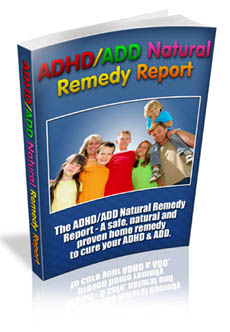What are some of the traits seen in people with ADHD?
Hallowell and Ratey, authors of an excellent text titled Driven To Distraction, list 20 symptoms that are often evident in a person with ADHD. They are:
- A sense of underachievement, of not meeting one's goals (regardless of how much one has accomplished)
- Difficulty getting organized
- Chronic procrastination or trouble getting started
- Many projects going simultaneously; trouble with follow through
- Tendency to say what comes to mind without necessarily considering the timing or appropriateness of the remark
- An ongoing search for high stimulation
- A tendency to be easily bored
- Easy distractibility, trouble focusing attention, tendency to tune out or drift away in the middle of a page or a conversation, often coupled with an ability to focus at times
- Often creative, intuitive, highly intelligent
- Trouble going through established channels, following proper procedure
- Impatient; low tolerance for frustration
- Impulsive, either verbally or in action, as in impulsive spending of money, changing plans, enacting new schemes or career plans, and the like
- Tendency to worry needlessly, endlessly; tendency to scan the horizon looking for something to worry about alternating with inattention to or disregard for actual dangers
- Sense of impending doom, insecurity, alternating with high risk-taking
- Depression, especially when disengaged from a project
- Restlessness
- Tendency toward active behavior
- Chronic problems with self-esteem
- Inaccurate self-observation
- Family history of manic-depressive illness, depression, substance abuse, or other disorders of impulse control or mood
The Diagnostic and Statistical Manual of Mental Disorders, 4th edition (DSM-IV) identifies the three subtypes of ADHD:
- ADHD: Predominately Hyperactive-Impulsive Type
- ADHD: Predominately Inattentive Type
- ADHD: Combined Type
This interest can so occupy their concentration and attention that they are unaware of virtually anything going on around them. When you see this, what you are seeing is a manifestation of their almost unappeasable and inexorable need for mental stimulation and activity, a need that seems to last for virtually every moment they are awake.
Whether hyperactive or not, most ADHD children, adolescents, and adults share one overriding characteristic - distractibility - and not just minor distractibility, but major, big-time, big-league distractibility.
My ADHD first grader is aggressive and easily frustrated at school. What's going on?
As these kids grow older, some react to too much or too little stimulation by "acting out" in the classroom or at day care. They may pull items off shelves, attack other kids, or seemingly "spin out of control" into a variety of silly behaviors. They can show signs of being hypersensitive to unusual sights or sounds. It is not unusual for these kids to have trouble adapting to changes in their daily routines and many (in one study, up to 63 percent) demonstrate sleeping difficulties. Traits In ADHD
No doubt, most of these kids demonstrate high levels of impulsive behavior, often at very early ages - even before the "terrible twos." Unusual behaviors for these youngsters can include erratic and aggressive actions such as hair pulling, biting, pinching, or hitting others. Temper tantrums, normal in most children, are often exaggerated in ADHD children - not usually out of anger, but by over-stimulation or even affectionate behavior. I've seen many perplexed morns whose two or three year old has displayed aggressive and abrupt behavior when being cuddled or hugged.
Because of these patterns, studies now suggest that ADHD can usually be diagnosed by age four and should not be diagnosed in those whose symptoms appear after age seven. To learn how to handle your ADHD kids, you can get Traits In ADHD right away and follow the steps in it.

